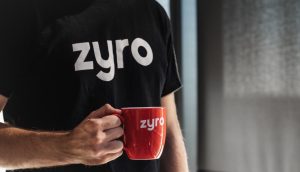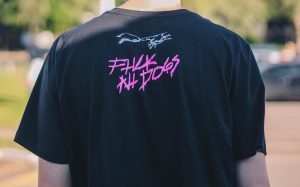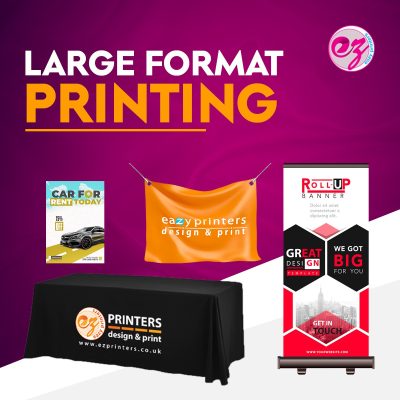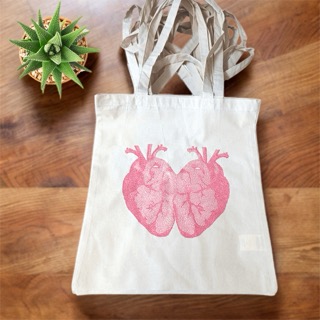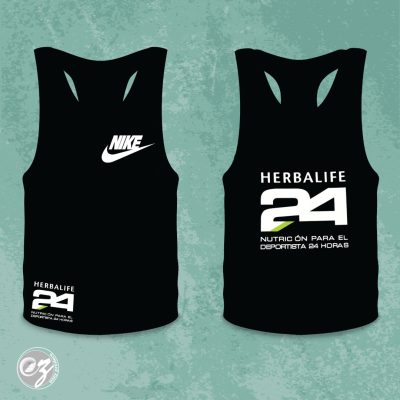In this article, we’ll walk you through the eight essential steps and guide you to custom t-shirt printing, from choosing the right printing method to getting the best possible results.
Custom t-shirts are a great way to express yourself, promote your business, or show your support for a cause. But with so many different printing methods and options available, it can be tough to know where to start. That’s where this guide comes in.

In this guide, you will learn about:
- The different types of t-shirt printing methods and their advantages and disadvantages.
- How to develop a high-quality t-shirt design.
- How to choose the right colors and fabrics for your t-shirts.
- How to find a reliable t-shirt printing company.
- How to optimize your design for printing.
- How to reduce the cost of your custom t-shirts.
By following the steps in this guide, you can create custom t-shirts that look great and last for years to come. I hope this guide will help you!
A Comprehensive 8-Step Guide to Achieving Optimal Custom T-shirt Printing Results
Get ready for a complete walkthrough! This will take you from start to finish, ensuring you achieve the finest t-shirt printing results. Simply adhere to these seven easy-to-follow steps in our t-shirt printing guide.
Step 1: Define Your Purpose
What are you using the custom t-shirts for? Are you printing them for personal use, for a business promotion, or for a charity event? Once you know the purpose, you can start to narrow down your options.

Step 2: Choose Your T-shirt Printing Method
There are many different t-shirt printing methods available, each with its own advantages and disadvantages. The most common methods are screen printing, direct-to-garment (DTG) printing, and heat transfer printing.
-
Screen printing
Screen printing is a traditional method of t-shirt printing that uses a screen to transfer ink to the t-shirt. The screen is made of a mesh material with a stencil that allows the ink to pass through. The stencil is placed on the t-shirt and then the ink is applied. The screen is then lifted and the process is repeated for each color in the design.
Screen printing is the most popular method of t-shirt printing because it is a versatile method that can be used to print a variety of designs, including full-color images. However, it can be expensive for small orders because it requires the creation of a separate screen for each color in the design.
-
Direct-to-garment (DTG) printing
DTG printing is a newer method of t-shirt printing that uses inkjet printers to apply ink directly to the t-shirt. This makes it a more affordable option than screen printing for small orders. However, DTG printing is not as versatile as screen printing and cannot be used to print full-color images.
-
Heat transfer printing
Heat transfer printing is a method of printing that uses heat to transfer a design from a transfer sheet to a t-shirt. The transfer sheet is made of a material that has the design printed on it. The transfer sheet is then placed on the t-shirt and heat is applied, which transfers the design to the t-shirt.
Heat transfer printing is a relatively inexpensive method of t-shirt printing that can be used to print a variety of designs. However, the quality of the prints may not be as good as screen printing or DTG printing.
Here are some factors to consider when choosing a t-shirt printing method:
- The type of design: Some printing methods are better suited for certain types of designs. For example, screen printing is a good choice for full-color images, while DTG printing is a better choice for simple designs.
- The quantity of t-shirts: Screen printing is more economical for large orders, while DTG printing is more economical for small orders.
- The budget: Screen printing is the most expensive method, followed by DTG printing and heat transfer printing.
- The quality of the prints: Screen printing and DTG printing produce the highest quality prints, followed by heat transfer printing.
I hope this helps!

Step 3: Develop Your Design
Once you’ve chosen a printing method, you need to develop your design. The design should be high-quality and should be compatible with the printing method you’ve chosen. If you’re not sure how to design a t-shirt, you can hire a professional designer to help you.
How to Develop a High-Quality T-shirt Design?
Here are some tips for developing a high-quality t-shirt design:
- Use high-resolution images and fonts.
- Keep the design simple and easy to read.
- Use contrasting colors that will stand out on the t-shirt.
- Proofread your design carefully before printing.
Step 4: Choose Your T-shirt Colors and Fabrics
The colors and fabric of your t-shirts will also affect the printing process. Some printing methods work better with certain colors and fabrics than others. So it’s important to choose colors and fabrics that are compatible with the printing method you’ve chosen.
Here are some things to consider when choosing t-shirt colors and fabrics:
- The printing method you’ve chosen.
- The purpose of the t-shirts.
- The climate where the t-shirts will be worn.
- The personal preferences of the wearer.
Step 5: Find a T-shirt Printing Company
Once you have your design finalized, you need to find a t-shirt printing company that can help you bring your vision to life. There are many different t-shirt printing companies available, so it’s important to do your research and find one that has a good reputation and offers the quality of printing you’re looking for.
How to Find a Reliable T-shirt Printing Company?
Here are some tips for finding a reliable t-shirt printing company:
- Get quotes from several companies.
- Read online reviews.
- Ask for recommendations from friends or family.
- Make sure the company has a good reputation.
You can also visit ez printers website for custom t-shirt printing!
Step 6: Place Your Order
Once you’ve found a t-shirt printing company, it’s time to place your order. Be sure to provide the company with all the necessary information, such as your design, the quantity of t-shirts you need, and the desired delivery date.
Step 7: Optimize Your Design for Printing
Before you send your design to the printing company, it’s important to optimize it for printing. This means ensuring that the design is high-resolution and that the colors are in the correct format.
How to Optimize Your Design for Printing?
Here are some tips for optimizing your design for printing:
- Use high-resolution images and fonts.
- Save your design in the correct format (usually PNG or JPEG).
- Proofread your design carefully before sending it to the printing company.
Step 8: Tips for Reducing Printing Costs
Looking to cut down on the expenses for your custom t-shirt printing? Consider these strategies for cost reduction:
- Embrace bulk orders.
- Opt for straightforward designs.
- Choose ink-efficient fonts.
- Embrace digital PDF files over paper.
- Implement double-sided printing.
- Thoroughly review and edit your designs.
- Power down your printer during idle periods.
- Explore the benefits of a Managed Print Service (MPS) solution.
Conclusion
Choosing the right t-shirt printing method is an important decision that will affect the quality, cost, and turnaround time of your project. By considering the factors outlined in this guide, you can choose the best method for your needs. I hope this will guide you in custom t-shirt printing.







